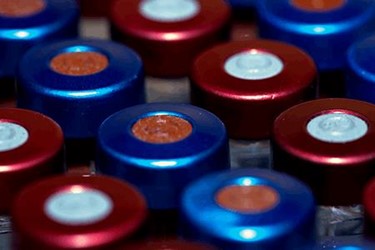Choosing The Right Packaging For Biologics & Biosimilars
By Jerry Martin, pharmaceutical and life sciences consultant to PMMI

The vast majority of large molecule biological and biosimilar drugs are injectables — sterile liquid dosages of one form or another. Relative to small molecule injectables, large molecule proteins present some unique challenges because of their intrinsic nature and properties. In particular, contaminants derived from the packaging, including leachables like metal ions or organics, silicone lubricants, etc., can have some effect on the protein, changing its shape, stability, activity, or immunogenicity, which in turn might cause an immunogenic response in the patient. With protein-based drugs, the biggest issue is the effect of packaging derivatives on the protein’s three-dimensional and surface structure. These are any effects that relate to denaturation or aggregation of the protein due to oxidation or interactions from contaminants or impurities in the preparation. The potential for these effects needs to be carefully considered in choosing the container and the container closure system to avoid putting patients in jeopardy.
Originally, most injectable protein products were supplied in some sort of glass vial. Today, more drugs are being introduced in prefilled syringes. The global market for prefilled syringes in 2014 was $3.9 billion, and by 2020, it’s expected to explode to $6.6 billion. Traditionally, these products have been packaged in glass, but there have been issues with protein compatibility in glass. Whether to go with glass or plastic is dependent on molecule formulation and the sensitivities of the protein. Proteins are sensitive to metal ions, and there are a variety of metals — including magnesium, iron, zinc, or barium — that can leach out of the glass. Usually, plastics offer a lower metal content, but some metals can leach from plastics so it’s important to understand what those metal leachables might be by having a proper extractable study on the plastics. With plastics, the bigger concern is organic leachables because the plastics are often formulated with organic additives serving as catalysts or curing agents, anti-oxidants, plasticizers, or processing aids. Those materials or their degradation products can leach into the formulation and could potentially interact with the proteins.
Plastics also tend to be more gas permeable, but there are new plastic syringes coming on the market that have multiple layers — there is structural plastic, which may have some gas diffusion properties, and then a gas barrier layer that is added. Flexible packaging often uses this common solution. Bulk packaging of drugs in bags, for example, often has a multilayer plastic bag constructed with an inert flexible layer in contact with the drug. A gas barrier film to maintain stability and prevent diffusion is either the outside layer or placed between two layers.
There are many choices in types of glass and plastic to ensure that you maintain proper pH and gas levels. In addition, drug product developers need to look at materials for closures, vial stoppers, plungers, and needles, as well as how the needles are made on prefilled syringes.
One current trend involves the traditional syringe barrel and/or plunger coated with silicone. Non-uniform silicone coatings can affect protein stability. The proteins can absorb into the walls of the container. While silicone can reduce absorbtion, excess silicone can form suspended oil-like droplets. Proteins can form around those droplets and change their natural state. New lubricant coatings, such as inert fluoropolymers, are being introduced to replace silicone. As a very inert material, fluoropolymer provides smoothness for the syringe plunger without the irregularities or the issues that have come with silicone. Other new coating materials are being introduced with new types of packaging related to self-injectors, especially injector pens, patches, and transdermal and wearable devices for self-infusion.

Involve your Packaging and Labeling group early in planning to help ensure a successful product launch. Learn how in this webinar by industry expert Michael Esposito:
The Importance of Packaging and Labeling in Pharmaceutical Product Development
The process of selecting materials and the type of packaging also offers an opportunity for the supplier to look for new biological delivery choices. Is it going to be provided in a prefilled syringe? Could it be made self-injectable by the patients? There's also a lot of work being done on the ergonomic features of syringes, including the thumb pad on the plunger and finger flange on the barrel. Another area that is generating interest is for injectables to enable self-delivery by the patients. Either they give the injections themselves or through automated wearable injectors. The latter can be attached to the patient’s abdomen, with the injection done automatically without them having to do anything, adding safety and delivery assurance and overcoming some of the challenges of patient compliance with self-injection.
The next few years will present an exciting time for innovation in the injectable delivery of large biological and biosimilar molecules. Developments continue almost daily on new packaging and delivery technologies, and the European Medicines Agency and the FDA plan directives to reduce counterfeiting and errors in the provision of drugs. The big challenges are understanding the global serialization requirements and technology. We don't yet have a global standard on serialization, so there are differences in various regions. To address the technology issue, companies are partnering with each other — contract packaging companies know how to do the packing but maybe don't have software or printing expertise. Rather than having the drug manufacturer identify software and printing and contract packaging separately, there's a real benefit to the individual suppliers teaming up.
Drug manufacturers should seek out these partnerships to access more expertise through a single channel. I think partnerships will continue to increase as deadlines get tighter and manufacturers feel the pressure to meet them. Working with suppliers that integrate their expertise will to help manufacturers select the best packaging for their products.
About The Author:
 Jerry Martin is an independent consultant to pharmaceutical manufacturers and equipment suppliers for filtration, single-use manufacturing, marketing, business development, and regulatory compliance. He was previously SVP, marketing and global scientific affairs, for Pall Life Sciences, where he served the pharmaceutical, biotech, medical device, and vaccine industries for over 37 years. He is currently chairman emeritus of the Bio-Process Systems Alliance, the single-use manufacturing trade association, and a member of the USP Expert Panel on Plastic Systems Used for Manufacturing Pharmaceutical Products. He holds an M.Sc. in microbiology from the University of Toronto.
Jerry Martin is an independent consultant to pharmaceutical manufacturers and equipment suppliers for filtration, single-use manufacturing, marketing, business development, and regulatory compliance. He was previously SVP, marketing and global scientific affairs, for Pall Life Sciences, where he served the pharmaceutical, biotech, medical device, and vaccine industries for over 37 years. He is currently chairman emeritus of the Bio-Process Systems Alliance, the single-use manufacturing trade association, and a member of the USP Expert Panel on Plastic Systems Used for Manufacturing Pharmaceutical Products. He holds an M.Sc. in microbiology from the University of Toronto.
Attendees of Healthcare Packaging EXPO (Sept. 25-27; Las Vegas Convention Center), co-located with PACK EXPO Las Vegas, will have an opportunity to see the latest solutions up close. The show, which serves as the largest event in North America for packaging this year, features more than 2,000 exhibitors and will be attended by 30,000 packaging industry professionals. Learn more, and register, at http://www.hcpelasvegas.com.
